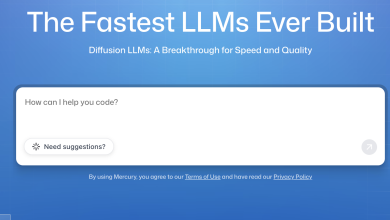
Honestly, I am not the biggest fan of ChatGPT for several reasons. But in this article, I will show a couple of ideas on how to use this AI tool for your own marketing campaigns. So, first things first:
What is ChatGPT, and How Does it Leverage AI for Marketing Purposes?
ChatGPT is an artificial intelligence (AI) tool that helps marketers automate their marketing processes. It leverages AI to generate content. By using ChatGPT, marketers can quickly create content for their campaigns and reduce the time spent on manual tasks.
With its ability to understand natural language, ChatGPT can help marketers generate personalized messages for their customers that provide a more human touch. In addition, it can also help them analyze customer data and suggest the best course of action for their marketing goals.
Understanding the Basics of ChatGPT & How It Benefits Your Business
ChatGPT is a chatbot generator that uses natural language processing technology to create personalized customer experiences. It is a powerful tool for businesses looking to improve their customer service and increase customer engagement.
By leveraging the power of AI, ChatGPT can generate meaningful conversations with customers, allowing them to get the answers they need in an efficient and natural way. With its ability to understand human language and respond in kind, ChatGPT can help businesses provide their customers with a more personalized experience that leads to increased satisfaction and loyalty.
The main reasons why I see ChatGPT as more critical:
What I miss within the Chatbot are some areas where I can work on the produced outcome. The interface is really a bot and it doesn’t give you any space to work on the social post or blog article. I see AI-produced content always as a first draft that you should work
That was also the reason why we compared ChatGPT with a more traditional writing assistant Rytr in the Founders Pack Live Show. The host of the show Michael Devellano used ChatGPT and I used Rytr and we created blog articles with the same topic on each platform. My main conclusion was that you need to know your idea for the blog article and the outcome and formulate it well within ChatGPT to get good results. So, the formulated prompt must be good and that will also improve your content outcome.
I also got some Feedback from Steve and Henry Sims, founders of Sims Media, who also answered this question: How to use ChatGPT for marketing issues?
Henry Sims mentioned that you could use ChatGPT also for not digital projects or marketing campaigns. “Use it f.e. for getting inspiration for letters or offline campaigns or even using it for brand or product names.”
Steve Sims also gave good advice and mentioned that “our imperfections are the real perfections. Nobody wants a perfect blog article. It should always something human added to it.”
So, make sure that you see the AI-produced outcomes as a first draft and put a human touch on it. Otherwise, your community will be bored and don’t read it. Henry also gave this example of his own newsletter that he outsourced to an agency and made it “beautiful looking and perfect”; all of a sudden the engagement and the opening rate decreased. “It was just too perfect; people felt that was not me without the small errors and imperfections. I had to take it over to me and do it myself again”, so Steve Sims.
Conclusion: Test it yourself, but always add some human touch to it
AI-generated articles can be the first draft of any piece of writing, saving copywriters time and energy. But to create truly original and creative content, it’s important to always work on the outcome, edit it, and add something human to it. Testing out AI writing assistants is a great way to get started with copywriting, but adding some personal touch will always make a difference. I will give more insights how to make sure that the workflows within your team work well and you use different AI tools in my new book Content AI.

